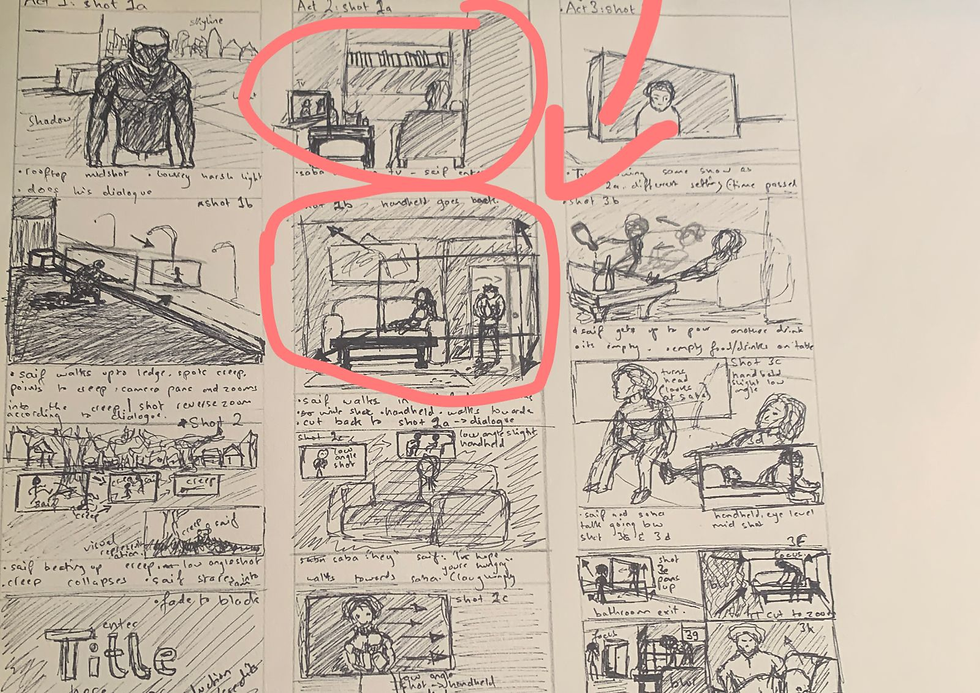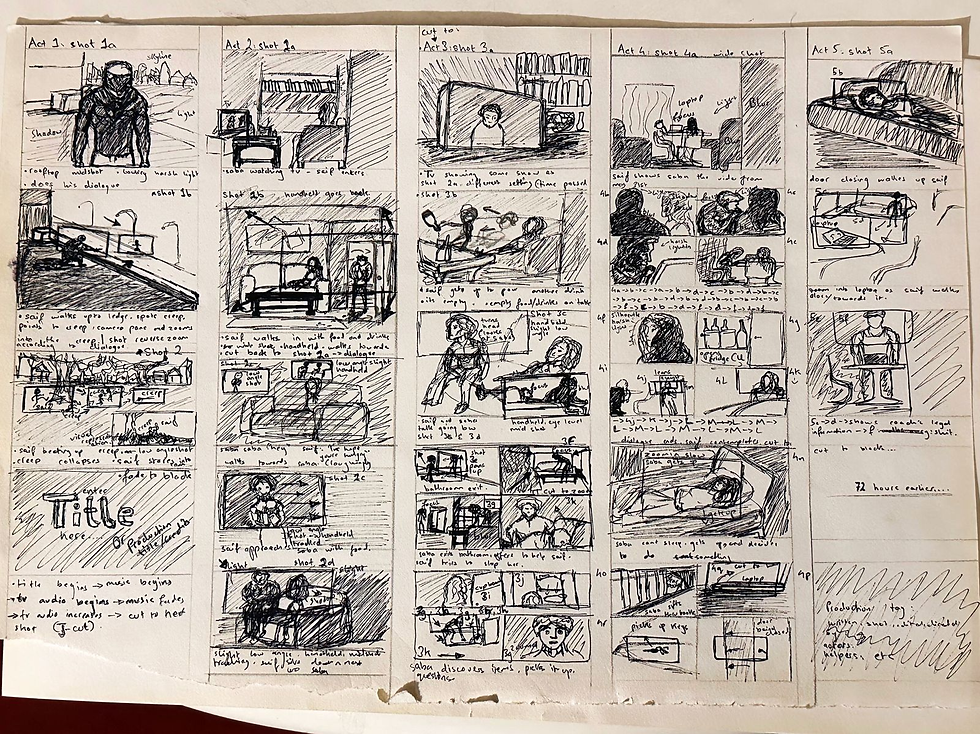Storyboarding
- zainfaridr
- Apr 8
- 2 min read
Updated: May 10
Storyboarding is one of those tasks that sets the tone for the entire production. For this project, I wanted to take a hands on approach, so I started off trying to create my storyboard digitally. I thought it’d be ffquicker and more efficient, but after a while, using a cursor and mouse pad felt more frustrating than creative. The process was painfully slow, and I couldn’t get the precision I needed, so I scrapped the digital route altogether.

I grabbed a piece of paper, a pen, and a ruler, and just like that, I was back to basics. Sketching my shots by hand turned out to be way more fulfilling. It felt personal, like I was actively shaping each frame of my vision. Every sketch gave me a clearer idea of the pacing and mood I wanted to capture, and seeing it all laid out in front of me helped me feel more in control of what I was about to shoot.


Another important part of my storyboard process was location scouting. I had already visited the filming locations and taken photos, so I used those images as references for my drawings. Knowing the real space made it easier to plan my shots and think about camera angles, lighting, and overall atmosphere.



Anyways here is the end product, which was used to guide me through the production phase as I had detailed every shot with camera angle, actor movement and dialogue / behavior, and how the camera moves etc.




Comments